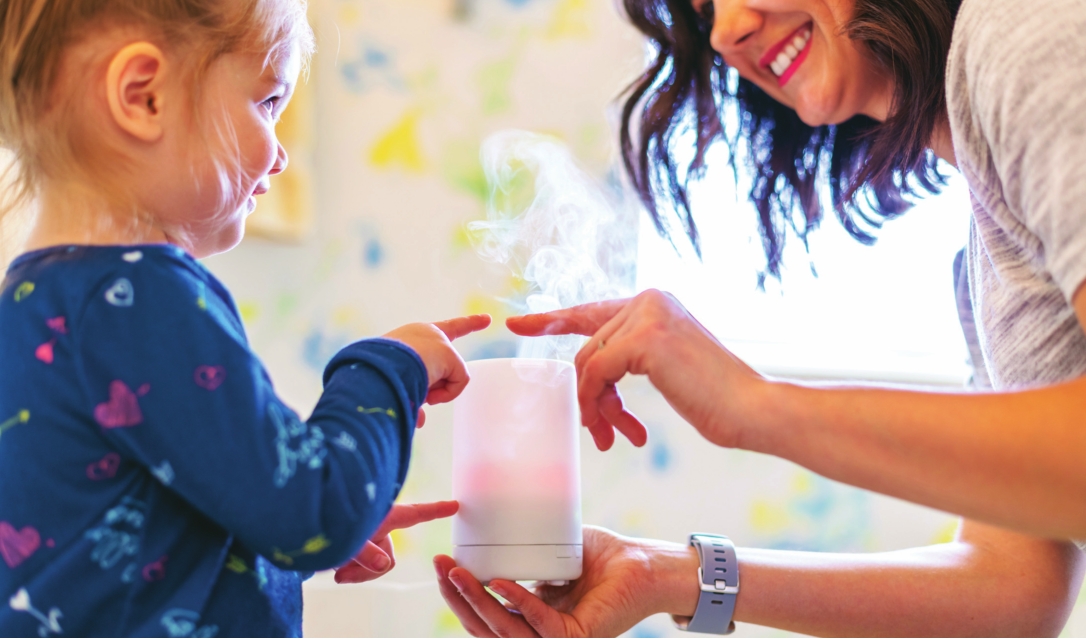
You can reap the bene its of essential oils without the drawbacks
I first started using essential oils on my kids last winter. We were packing for a trip to Disney World during Christmas break, and all three of my children were coughing, congested, tired and cranky – in short, not at all ready for the physical exertion necessary to navigate Disney. Plus, I was worried about putting everyone on a germ-finfested airplane and picking up even more viruses before we even arrived, not to mention the petri dish of microbes I imagined Disney theme parks to host.
A mom friend suggested I try essential oils to aid in recovery and fillness prevention, so I followed her advice and checked out the selection of essential oil options. After I recovered from sticker shock – it helped to weigh the cost of essential oils against the price of Disney – I took the plunge.
The kids got better, we didn’t catch any additional viruses on the plane and we had an amazing marathon of Disney craziness. Would we have had that same experience of good health without the essential oils? Maybe. I’ll never know – because if we ever go back to Disney, I’m bringing those same oils again, and I’ll be slathering them on the whole family just in case.
Helpful, harmful or neutral?
Here’s the issue: Is using oils “just in case” they’re effective a waste of money and time? Or worse, could using essential oils on children actually pose a threat?
According to a July 2019 New York Times article, the possible dangers of essential oil use on children are not to be underestimated.
Diffusing oils in the air means kids breathe in tiny particles. This is the aim, if you’re hoping those particles will have a beneficial health effect, but those same particles can also irritate airways, especially in children with asthma or allergies. For this reason, experts recommend against diffusing oils in group settings.
The article said by far the greatest danger is the risk that young kids will access the oils and ingest them, spill them on their skin, or splash them in their eyes. Essential oils are extremely concentrated and can cause chemical burns or worse. The American Association of Poison Control Centers conducted a study for NYT that found an 85% increase in harmful essential oil incidents in children under age 12 between 2014 and 2018.
Use with caution
Experts agree that essential oils contain powerful chemical compounds that can impact human health and that we need further research to fully understand their functions. The question that remains undecided is whether those chemicals are safe in the hands of amateur users. Without much information or guidance, might well-meaning parents (like me) accidentally harm the very people they’re meaning to protect?
For those of us who don’t plan to put down our stash of essential oils anytime soon, a few safety guidelines are in order. Lisa Squires, integrative health program nurse coordinator at Children’s Hospital of Philadelphia and a professional aromatherapist, suggests the following safe and enjoyable ways to use essential oils with kids:
DO use mandarin and lavender, the two most researched oils.
“Both can really help calm children at the end of a long, hectic day. You could dilute a drop or two of lavender in some vegetable glycerin (available at health food stores) and then put in the bathtub for a relaxing bath.”
DON’T run an essential oil diffuser for more than 30 minutes.
“After a while the brain starts to ignore the odor, and inhaling too much of an essential oil can cause the reverse effects to occur, like induce headaches or increase irritability.”
DO stop after a drop or two of oil.
“There is a tendency to want it to smell really strong and add more oil than you need, which may be overpowering for young children who have more sensitive noses.”
DON’T use with infants.
“At Children’s Hospital of Philadelphia we restrict their use to children over the age of 3 due to lack of research that confirms its safety.”
DO try aromatherapy inhalers, containers that look like a chapstick and have an oil or combination of oils that can help calm upset feelings, ease nausea or help with cold symptoms.
“These are nice because the oils cannot come in contact with the skin and the child can use them when they want to and choose between different smells.”
DO ask for instructions before applying oils directly to the skin.
“Dilution can be complicated and should be done on the advice of a professional aromatherapist who knows the child’s weight and will take that in to consideration with other factors, such as how it will be applied.”
DON’T leave standing water in your oil diffuser – it can grow mold and bacteria.
Elizabeth Watson of Springfield is a freelance writing coach and mother of three who eagerly seeks solutions – homeopathic and otherwise – to all life’s challenges. You can learn more about her at writewithelizabeth.com.